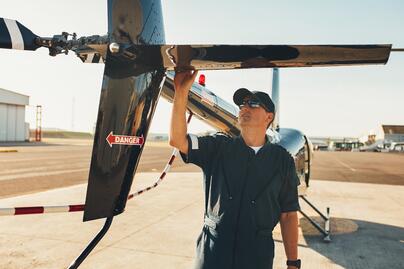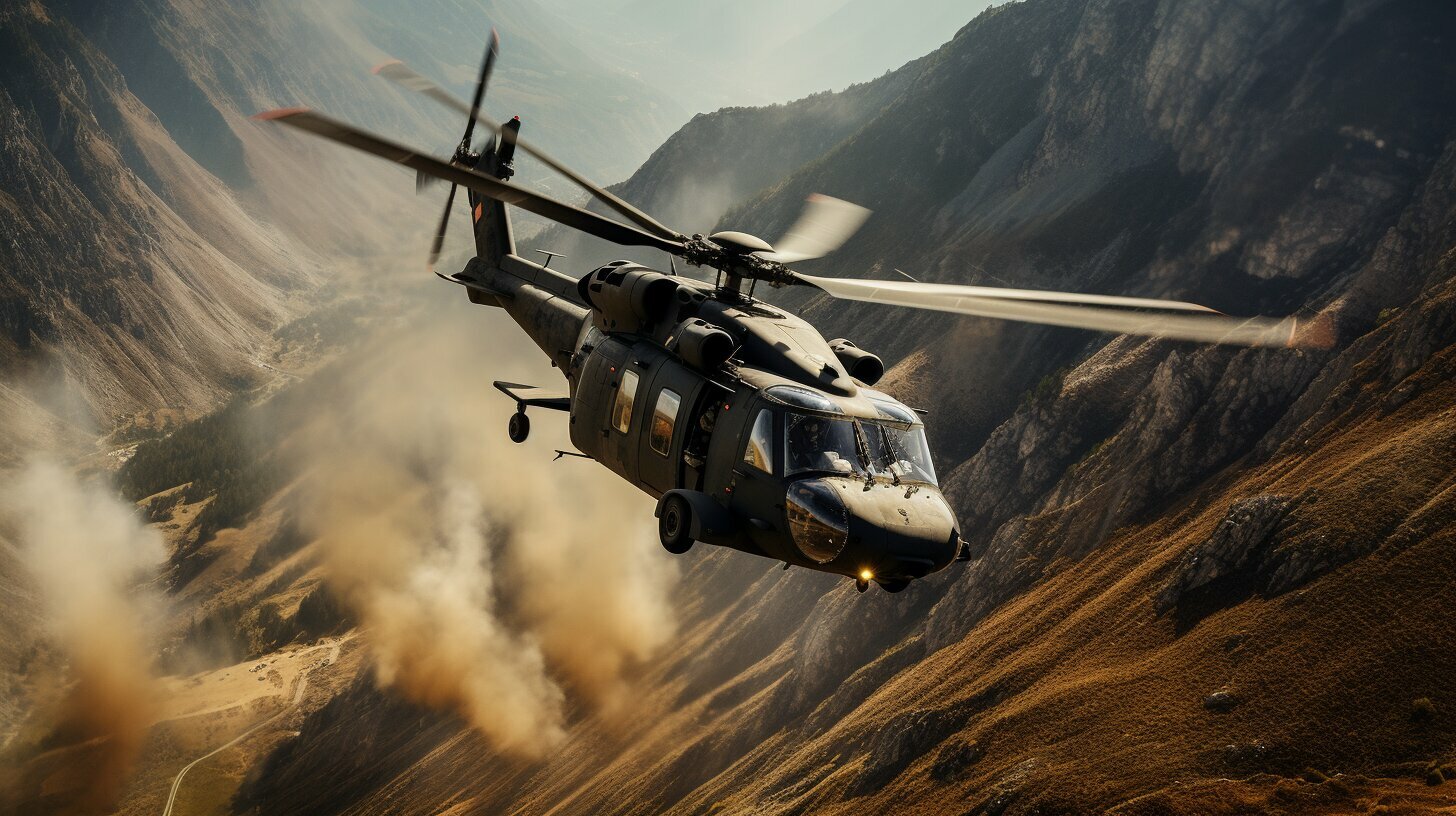
Major Safety Issues for Helicopters
Helicopters are vertical take-off and landing aircraft that use powered rotors to provide lift and thrust. While helicopters provide unique capabilities like hovering and low-speed maneuverability, they also come with major safety challenges that pilots and operators must manage. This article explores some of the key safety issues with helicopters and steps that can mitigate risks.
Mechanical Issues
As complex machines with many interconnected moving parts, helicopters are prone to mechanical problems that can quickly become safety issues:
Engine Failure
Helicopter engines provide power to the main and tail rotors. An engine failure can cause a complete loss of control if not handled properly. Fortunately, helicopters are equipped with governors and spooling devices to automatically increase power to the remaining engine in multi-engine crafts. Pilots train extensively for engine failure scenarios to maintain rotor RPMs and conduct safe landings.
Rotor Malfunctions
Damage to rotor blades or mechanical failures in the rotor system can lead to severe vibrations, imbalance, and potential loss of control. Pilots cannot afford complacency and must constantly monitor rotor systems in flight. Preventative maintenance checks help spot wear and tear issues before they become catastrophic.
Gear Box Problems
Gear boxes transfer power from engines to rotors. If these experience leaks, chips, or abnormal temperatures, they can critically fail. Pilots keep an eye out for warning signs and practice landing without power in case of total gear box failure.
Hydraulic Failure
Hydraulic systems power key flight control mechanisms. Failure could lead to loss of control of rotor pitch or inability to operate landing gear. Hydraulic redundancy via multiple independent systems helps mitigate total failures, and pilots train for manual reversion.
Aerodynamic Challenges
The physics of helicopter flight leads to tricky aerodynamic situations that test pilot skill:
Retreating Blade Stall
At high speeds, the retreating blade on the side of the helicopter moving backwards can experience reversed airflow leading to a stall and loss of lift. This causes the helicopter to roll over and requires immediate pilot correction.
Vortex Ring State
When descending too quickly into its own downdraft, a helicopter can experience disturbed airflow leading to a vortex ring state. This causes severe loss of lift and difficulty controlling the craft. Pilots avoid this through proper approach angles and power management.
Dynamic Rollover
If a helicopter’s center of gravity moves beyond its undercarriage, it can dynamically roll over. This can happen with hard lateral maneuvers or if one gear collapses. Pilots avoid aggressive maneuvers near the ground and train to touch down as gently as possible.
Ground Resonance
Improper rotor tuning can lead to a phenomenon called ground resonance where the helicopter begins vibrating violently when on the ground. This can cause severe damage or rollover within seconds. Maintaining proper rotor rigging and blade tracking helps avoid this.
Situational Awareness Challenges
Operating close to terrain and structures in busy airspace leads to challenges in maintaining situational awareness:
Spatial Disorientation
Without a natural horizon, it’s easy for pilots to lose track of which way is up. This spatial disorientation can lead to dangerous flying attitudes. Instrument training, mental imagery, and monitoring instruments helps pilots keep proper orientation.
Limited Visibility Issues
Low visibility due to weather or darkness leads to reduced visual references. This demands greater reliance on instruments and systems for navigation, approaches, and landing. Enhanced equipment training and proficiency in instrument flying helps manage loss of visibility.
Distractions and Workload
High pilot workload leading to distractions has caused many helicopter accidents. From programming radios to navigating to dealing with passengers, high cockpit task saturation can lead to loss of situational awareness. Good workload management, task prioritization, and defensive flying help.
Operational Hazards
The unique capabilities of helicopters allow them to operate in high risk areas like:
Low-Altitude Flight
Flying at low altitudes below 100 feet for extended periods leaves little room for error and higher risks due to wires, terrain, obstacles, and dynamic rollover. Operational regulations generally dictate minimum altitudes for different operations. Pilots are trained to avoid unnecessary low flying.
Overwater Operations
Flying extended distances over water leads to risks of a crash landing and ditching. Equipment like life rafts, emergency beacons, immersion suits, and egress training enhances survival chances in overwater emergencies. Overwater operations demand thorough pre-flight planning for contingencies.
Mountain Flying
Navigating through mountain passes and high terrain demands special training. Hazards include rapidly rising terrain, turbulence around ridges, and few safe landing areas. Mountain course training teaches terrain avoidance, valley flying procedures, and how to conduct high-altitude landings if required.
Helicopter pilots also routinely deal with additional hazards like deteriorating weather, unimproved landing zones, high winds, and emergency medical service operations. Thorough training, safety-focused operations, and vigilant airmanship are key to managing risks from these factors.
Mitigating Helicopter Safety Risks
While helicopter operations will always involve a level of inherent risk, steps can be taken to enhance safety margins:
Comprehensive Pilot Training
Extensive initial and recurrent training prepares pilots for emergency scenarios, teaches risk management strategies, and promotes sound decision making. Training should emphasize critical safety areas like handling emergencies, navigating terrain and obstacles, and coping with flat light or white out conditions.
Strict Maintenance Programs
Stringent maintenance schedules, rigorous inspections, replacement of life-limited parts, and overhaul protocols keep aircraft airworthy. Redundant critical systems, damage tolerant rotor components, and onboard health monitoring provide backup protections.
Safety-Oriented Operations
Operations manuals outline standard operating procedures, aircraft limitations, emergency protocol, and proven safety practices. Management promotes a culture of safety and ensures operational risks are minimized through precautions like minimum equipment lists, flight following, and fatigue management.
Hazard Avoidance
While some risks like weather cannot be avoided entirely, pilots take steps to reduce exposure to known hazards. This means avoiding unnecessary low flying or overwater flight, giving obstacles and terrain ample clearance, staying clear of tail rotors, and declining flights in excessively risky conditions.
Personal Minimums
Individual pilots establish personal limitations more conservative than regulations to manage risks based on experience levels and proficiency. For example, only flying in light winds, staying within 25 miles of an emergency landing site, or limiting operations after dark. These provide an extra safety buffer.
Ongoing Training
Even the most experienced pilots maintain proficiency through frequent practice of skills, simulated emergency procedures, and exposure to challenging conditions through training like flight reviews and recurrent training. Going above minimums enhances skill and readiness.
Conclusion
Helicopters provide unique mission capabilities but also come with major inherent risks that demand training, preparation, planning, and vigilance from pilots and operators. However, a safety-conscious approach can help reduce exposure to avoidable hazards. With proper precautions and mitigations, the risks of helicopter flight can be managed.
Helicopter Safety FAQs
What are some common causes of helicopter accidents?
- Loss of control due to spatial disorientation
- Engine failures or mechanical problems
- Dynamic rollover during takeoff or landing
- Impacting terrain due to poor visibility or situational awareness
How can helicopter pilots mitigate risks?
- Maintain proficiency via frequent, recurrent training
- Implement personal weather and operating minimums
- Prioritize regular maintenance and inspections
- Fly defensively and avoid unnecessary risks
- Maintain strict focus on situational awareness
What special skills does helicopter flying require?
- Mastery of hovering, vertical takeoff and landing
- Managing variable rotor RPMs and torque
- Coordinating pedal turns and bank angles
- Understanding aerodynamic hazards like retreating blade stall
- Remaining vigilant of surroundings near ground
What emergency procedures should helicopter pilots practice?
- Engine failure profiles and autorotation landings
- Landing without power and stuck pedal scenarios
- Recovery from vortex ring state or settling with power
- Instrument flight using backup systems only
- Ditching procedures like activating floats
How can technology enhance helicopter safety?
- Stability augmentation systems and autopilots reduce workload
- Terrain awareness and warning systems alert of obstacles or ground
- Health and usage monitoring provides early warning of issues
- Night vision goggles and enhanced vision systems aid situational awareness
- Satellite tracking and emergency beacons aid search and rescue
What regulations cover helicopter operations and certification?
- Manufacturers must meet airworthiness standards via FAA Part 27
- Operators fly under general operating rules in FAA Part 91
- External load and commercial operations have added rules in Parts 133-136
- Pilot certification standards are covered under Part 61
- Maintenance regulations exist in Part 43







